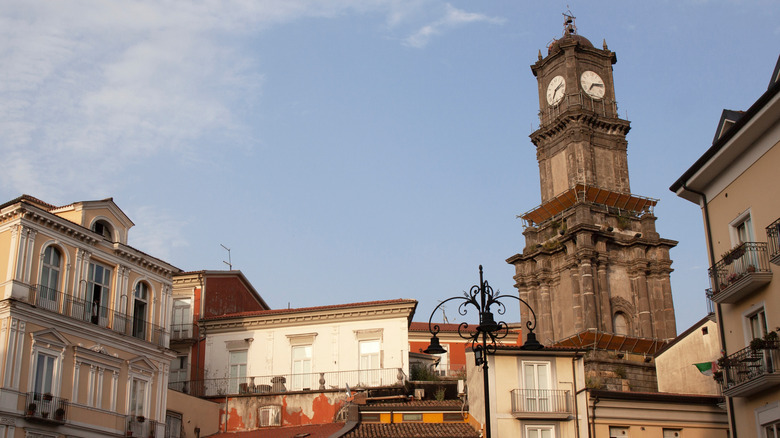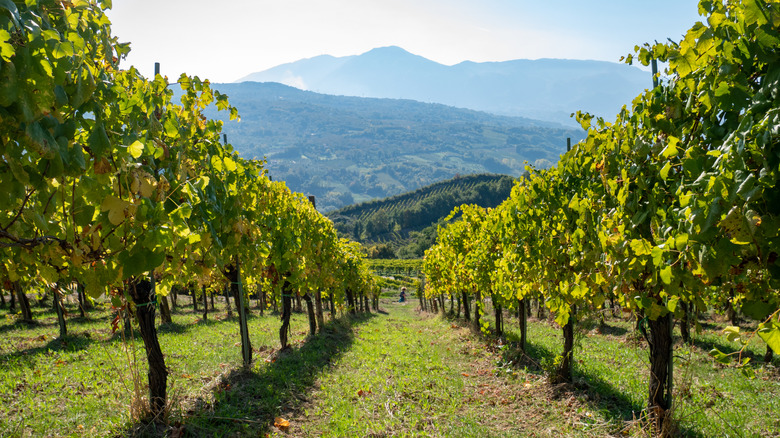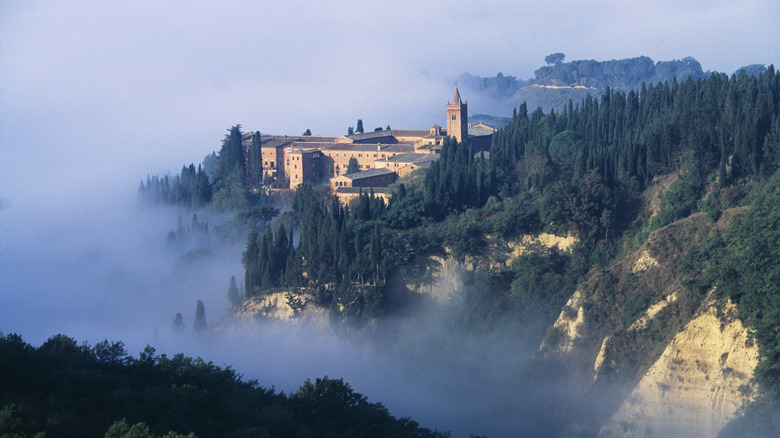One Of Italy's Most Underrated Medieval Mountain Towns Is A Food And Wine Paradise
While most visitors to Italy flock to more well-known locations such as Rome, Venice, or Florence, many small villages with equal amounts of charm are often overlooked. One mountain town in the stunning Campania region of southern Italy is known for its medieval architecture and culinary delights. Avellino, located around 40 minutes by car from Naples, is a treasure trove for those seeking to immerse themselves in culture, history, food, and wine. The town has borne witness to the rise and fall of various civilizations, each leaving behind an influential piece of the region's culture, local cuisine, and winemaking traditions.
The fruitful soil and mild Mediterranean climate make Avellino an agricultural haven. The region is famous for its high-quality produce, including truffles, hazelnuts, and Carmasciano cheese. These ingredients form the foundation of the local cuisine, ensuring that every dish is bursting with freshness and flavor. Additionally, the surrounding hills and mountains create the perfect microclimate for grape cultivation, making Avellino one of Italy's premier wine regions. Swap out a visit to Tuscany for lesser-known regions of Italy, and enjoy beautiful Avellino.
Spend a day exploring vineyards
Avellino is part of the Irpinia wine district and is known best for its three unique wines: Fiano, Taurasi, and Greco di Tufo. Fiano di Avellino is a white wine made from the Fiano grape, which thrives in volcanic soil. It is best known for its floral aroma, notes of honey and hazelnut, and crisp acidity. Greco di Tufo is another white known for its mineral-driven profile and vibrant citrus flavors. It is also the oldest of the varieties and was originally imported to the region by the Greeks from Thessalia. Lastly, the Taurasi wine, with its deep ruby color, complex flavors of dark fruit and spice, and aging potential, is a must-try for red wine lovers.
With that said, a trip to Avellino would be incomplete without touring some of Italy's best wine-tasting spots, each offering informative guided tours and tastings so visitors' thirst for wine and knowledge can be quenched. Like most wineries in the hills of Italy, these locations need a car to access. Pay a visit to Terredora di Paolo, a winery offering tours and tastings, Feudi di San Gregorio, one of the area's largest wineries, or Villa Raiano, a winery with delicious wines and even better views.
Avellino's love for food and wine is celebrated not only through its dishes and wineries but also through its festivals and events. Held in the fall, The Chestnut and Hazelnut Festival celebrates the province's agricultural giants with crafts, beer and wine tastings, and dishes made from the two nuts. In the summer, The Taurasi Wine Festival is a great opportunity for lovers of wine and cuisine to come and enjoy a few days dedicated solely to the Taurasi region's red wine.
Explore medieval architecture
Aside from delicious cuisine and wines, Avellino is known for its stunning medieval architecture. After a 6.9 magnitude earthquake wreaked havoc on the town and its inhabitants in 1980, many of the once-ancient buildings were rebuilt. Although some buildings remain under construction, visitors to the Avellino today still have a few architectural beauties from which to choose. Pay a visit to the Duomo di Avellino, a Baroque and Neoclassical-style cathedral adorned with intricate frescoes and religious artwork. Discover today's beautiful Torre dell'Orologio, a 118-foot-tall clock tower and the symbol of Avellino, which ranks as one of the best underrated Mediterranean bucket list places.
Visitors from all over pay a pilgrimage to the Sanctuary of Montevergine, a large abbey perched high atop a mountain overlooking Avellino. The church can be reached by funicular in Montevergine or by driving to the top of the hill. The monastery includes two basilicas, the crypt of San Guglielmo, the votive hall, and a museum of archaeological findings. It even houses a small shop that contains a supply of monk-made elixir — the Flore di Monteoliveto. This after-dinner digestive is infused with 23 medicinal and aromatic herbs carefully crafted by the monks of Montevergine.


